The cardiovascular system is a closed circulatory network consisting of the heart and blood vessels. It transports blood throughout the body, supplying oxygen and nutrients while removing waste, ensuring proper bodily function and overall health.
1.1 Overview of the Cardiovascular System
The cardiovascular system is a closed network of organs and vessels that circulate blood throughout the body. It includes the heart, arteries, veins, and capillaries, functioning as the primary transport system for oxygen, nutrients, and waste products. The system operates in two main circuits: the pulmonary circuit, which carries blood between the heart and lungs, and the systemic circuit, which delivers oxygenated blood to the body and returns deoxygenated blood to the heart. This continuous process is essential for maintaining cellular function, overall health, and homeostasis.
1.2 Functions of the Cardiovascular System
The primary functions of the cardiovascular system include transporting oxygen and nutrients to cells and removing waste products. It also facilitates the delivery of hormones and immune cells, aiding in the body’s defense mechanisms. Additionally, the system plays a crucial role in regulating body temperature and maintaining fluid balance. By ensuring a continuous blood supply, it supports cellular metabolism and overall physiological processes, making it vital for sustaining life and maintaining optimal health.
1.3 Historical Milestones in Cardiovascular Research
Historical milestones in cardiovascular research include William Harvey’s 1628 description of blood circulation, laying the foundation for modern understanding. The 20th century saw the development of the electrocardiogram (ECG) by Willem Einthoven and the discovery of anticoagulants like heparin. The 1960s marked the first successful heart transplant by Christiaan Barnard, revolutionizing cardiac surgery. Advances in statins during the late 20th century significantly improved cholesterol management. Recent progress includes gene therapy and stem cell research for heart disease, highlighting ongoing innovation in the field, continuously enhancing our understanding and treatment of cardiovascular conditions.
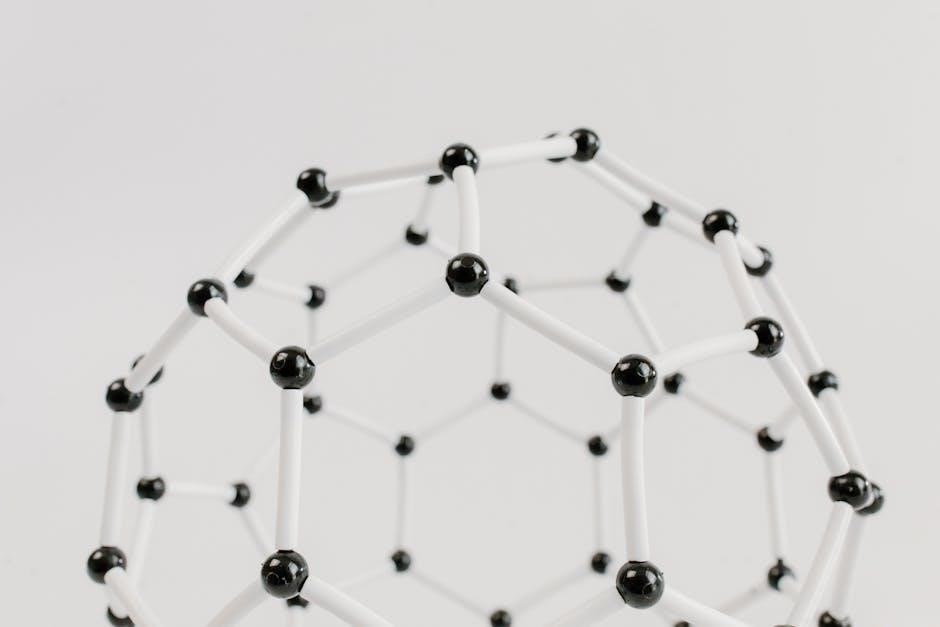
Components of the Cardiovascular System
The cardiovascular system comprises the heart, blood vessels (arteries, veins, capillaries), and blood, working together to circulate nutrients, oxygen, and waste products efficiently throughout the body.
2.1 The Heart: Structure and Function
The heart is a muscular organ with four chambers: the left and right atria, and the left and right ventricles. The atria receive blood entering the heart, while the ventricles pump it out. The septum separates the chambers, preventing blood mixing. The cardiac cycle involves systole (contraction) and diastole (relaxation), ensuring efficient blood circulation. Valves regulate blood flow direction, maintaining orderly movement. The heart pumps approximately 5 liters of blood daily, crucial for delivering oxygen and nutrients to tissues and removing waste products, making it central to overall cardiovascular function and vitality.
2.2 Blood Vessels: Arteries, Veins, and Capillaries
Arteries, veins, and capillaries form the vascular network of the cardiovascular system. Arteries, thick-walled and muscular, carry oxygen-rich blood away from the heart, except for the pulmonary artery. Veins, thinner and less muscular, return oxygen-depleted blood to the heart, equipped with one-way valves to prevent backflow. Capillaries, tiny and thin-walled, facilitate the exchange of oxygen, nutrients, and waste products between blood and tissues. This vascular system ensures efficient circulation, maintaining proper tissue function and overall health by transporting essential substances throughout the body.
2.3 Blood: Composition and Role
Blood is a vital fluid composed of plasma (the liquid component), red blood cells (erythrocytes), white blood cells (leukocytes), and platelets. Plasma transports nutrients, hormones, and waste products, while red blood cells carry oxygen and carbon dioxide via hemoglobin. White blood cells play a crucial role in immunity, defending against infections. Platelets are essential for blood clotting, preventing excessive bleeding. Together, these components ensure the delivery of oxygen, removal of waste, and maintenance of cardiovascular health, making blood indispensable for sustaining life and overall bodily functions.

The Heart in Detail
The heart is a muscular organ with four chambers, functioning as the body’s primary pump. It ensures efficient blood circulation, crucial for overall health.
3.1 Chambers of the Heart
The heart is divided into four chambers: the right atrium, left atrium, right ventricle, and left ventricle. The atria are the upper chambers that receive blood returning to the heart, while the ventricles are the lower, muscular chambers responsible for pumping blood out of the heart. The septum, a wall of tissue, separates the right and left sides of the heart, preventing blood from mixing. This structural organization ensures efficient blood circulation, with the right side handling deoxygenated blood and the left side managing oxygenated blood.
3.2 Heart Valves and Their Functions
The heart contains four valves that ensure blood flows in one direction. The tricuspid valve and pulmonary valve regulate blood flow on the right side, while the mitral valve and aortic valve manage flow on the left. These valves open and close with each heartbeat, preventing backflow and ensuring efficient circulation. Proper valve function is critical for maintaining cardiac efficiency and overall cardiovascular health, as malfunction can lead to conditions like stenosis or regurgitation, requiring medical intervention.
3.3 The Cardiac Conduction System
The cardiac conduction system is a network of specialized cells that generate and transmit electrical impulses, controlling the heart’s rhythmic contractions. It begins with the sinoatrial (SA) node, the heart’s natural pacemaker, located in the right atrium. The atrioventricular (AV) node delays the signal, allowing atria to fully contract before ventricles. The Bundle of His and Purkinje fibers rapidly conduct the impulse to the ventricles, ensuring synchronized contractions. This system maintains a stable heart rate and coordinates the timing of cardiac cycles, essential for efficient blood circulation and overall cardiovascular function.
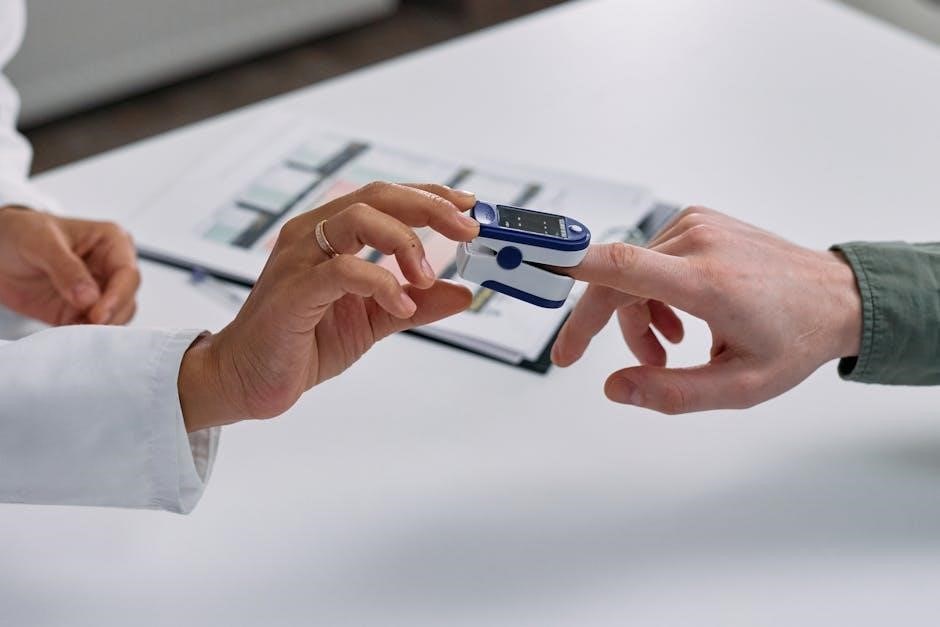
Blood Vessels and Circulation
The cardiovascular system includes arteries, veins, and capillaries, forming a network for blood circulation. Arteries carry oxygenated blood away from the heart, while veins return deoxygenated blood to it, maintaining the body’s metabolic needs and overall health through efficient blood flow.
4.1 Arteries: Structure and Function
Arteries are thick-walled blood vessels designed to withstand high blood pressure. They possess a smooth muscle layer and a tough elastic lamina, allowing them to stretch and recoil with each heartbeat. This elasticity helps maintain consistent blood flow to tissues. Arteries carry oxygenated blood away from the heart to the body, with the exception of pulmonary arteries, which transport deoxygenated blood to the lungs. The largest artery, the aorta, arises from the left ventricle, branching into smaller arterioles that regulate resistance and blood distribution throughout the body, ensuring efficient oxygen delivery and maintaining circulatory homeostasis.
4.2 Veins: Structure and Function
Veins are blood vessels that return deoxygenated blood to the heart, except for the pulmonary veins, which carry oxygenated blood. They have thinner walls and less muscular structure compared to arteries. Veins contain one-way valves to prevent backflow, ensuring blood moves unidirectionally towards the heart. This valvular system is crucial for maintaining efficient circulation, especially against gravity in upright postures. Veins act as blood reservoirs, holding approximately 60% of the body’s blood volume, and their capacitance function helps regulate blood pressure and blood distribution, ensuring proper venous return and overall circulatory efficiency.
4.3 Capillaries: Role in Exchange of Substances
Capillaries are the smallest blood vessels, serving as the primary sites for the exchange of oxygen, carbon dioxide, nutrients, and waste products between blood and tissues. Their thin walls, consisting of a single layer of endothelial cells, facilitate diffusion of substances. Capillaries connect arterioles to venules, forming a microcirculatory network essential for delivering oxygen and nutrients to cells and removing metabolic byproducts. This exchange is vital for maintaining cellular function, overall tissue health, and the body’s metabolic balance, ensuring proper delivery and removal of essential substances efficiently throughout the body.

Blood and Its Components
Blood is a vital component of the cardiovascular system, consisting of plasma (the liquid portion), red blood cells (for oxygen transport), white blood cells (for immunity), and platelets (for clotting).
5.1 Plasma: The Liquid Component of Blood
Plasma is the liquid portion of blood, making up approximately 55% of its total volume. It is primarily composed of water (about 92%) and includes essential components such as proteins, nutrients, hormones, gases, waste products, and ions. Plasma serves as a medium for transporting these substances throughout the body, ensuring proper cellular function and overall health. It also plays a critical role in maintaining blood viscosity and pH balance, which are vital for the cardiovascular system to function effectively. Without plasma, the exchange of oxygen, nutrients, and waste products between cells and the bloodstream would not be possible. Its composition and functions are indispensable for maintaining life.
5.2 Red Blood Cells: Function and Lifespan
Red blood cells (RBCs), also known as erythrocytes, are the most abundant blood cells, primarily responsible for transporting oxygen from the lungs to tissues and carbon dioxide from tissues to the lungs. They contain the protein hemoglobin, which binds oxygen, enabling efficient gas exchange. RBCs are produced in the bone marrow and have a lifespan of approximately 120 days. Their flexible, biconcave disc shape allows them to move easily through capillaries. After reaching the end of their lifespan, RBCs are removed by the spleen, ensuring the blood remains functional and healthy. Their role is vital for maintaining cellular respiration and overall bodily function.
5.3 White Blood Cells: Role in Immunity
White blood cells (WBCs) are a crucial component of the immune system, playing a central role in protecting the body against infections and diseases. They circulate through the bloodstream and lymphatic system, identifying and neutralizing pathogens such as bacteria, viruses, and fungi. There are several types of WBCs, including neutrophils, lymphocytes, and monocytes, each with specialized functions. Neutrophils primarily target bacterial infections, while lymphocytes, including T cells and B cells, are essential for adaptive immunity, recognizing specific antigens and initiating targeted responses. Their activity is vital for maintaining immune defense and overall health, preventing the progression of infections and promoting healing.

Regulation of the Cardiovascular System
The cardiovascular system is regulated by neural, hormonal, and local mechanisms, ensuring blood flow and pressure are maintained according to the body’s needs.
6.1 Neural Regulation: The Autonomic Nervous System
The autonomic nervous system (ANS) plays a crucial role in regulating the cardiovascular system. It operates involuntarily, balancing sympathetic and parasympathetic responses to maintain homeostasis. The sympathetic nervous system increases heart rate and cardiac output during stress, while the parasympathetic nervous system, primarily via the vagus nerve, promotes relaxation and reduces heart rate. This dual regulation ensures efficient blood flow and pressure adjustments based on physiological demands, maintaining overall cardiovascular stability and responsiveness to external and internal stimuli. The ANS is essential for adaptability and survival, fine-tuning cardiac function seamlessly.
6.2 Hormonal Regulation: Role of the Endocrine System
The endocrine system significantly influences the cardiovascular system through hormones that regulate heart function and blood vessel activity. Key hormones include aldosterone, which controls blood volume by managing sodium and water retention, and antidiuretic hormone (ADH), which reduces water loss. Additionally, the renin-angiotensin-aldosterone system (RAAS) plays a critical role in blood pressure regulation. Atrial natriuretic peptide (ANP), released by the heart, counters RAAS by promoting sodium excretion and vasodilation. Thyroid hormones also modulate metabolic rate and cardiac output. These hormonal mechanisms work synergistically to maintain cardiovascular homeostasis and adapt to physiological demands.
6.3 Local Regulation: Tissue and Organ-Level Control
Local regulation ensures that tissues and organs receive the appropriate blood flow and oxygen delivery. Vasodilation and vasoconstriction are controlled by local factors such as oxygen levels, carbon dioxide, and metabolic byproducts. For example, low oxygen levels in tissues trigger the release of adenosine, which dilates blood vessels to increase blood flow. Additionally, endothelial cells lining blood vessels produce nitric oxide, a potent vasodilator, in response to increased shear stress. This localized control allows for precise adjustments to meet the specific needs of different tissues, maintaining efficient circulation without relying solely on central nervous or hormonal systems.
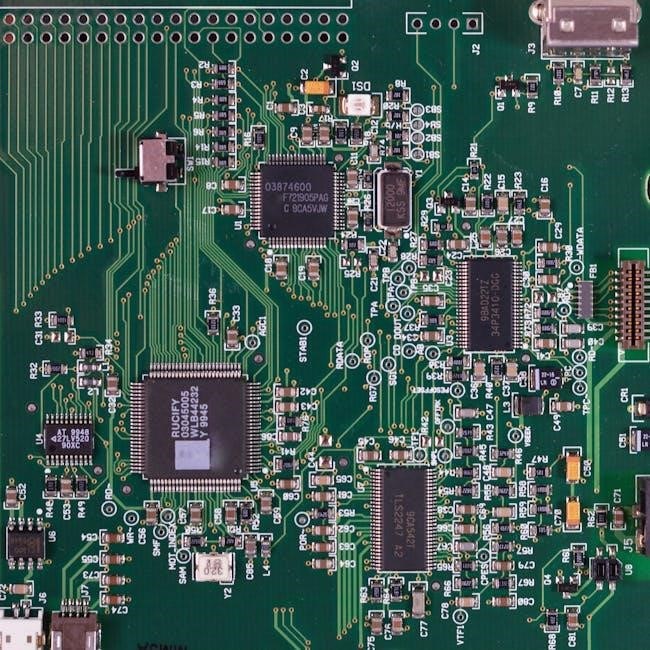
Clinical Significance of the Cardiovascular System
The cardiovascular system is vital for delivering oxygen and nutrients while removing waste, sustaining life and overall health. Its proper function prevents diseases like hypertension and heart failure.
7.1 Importance in Oxygen Transport
The cardiovascular system plays a crucial role in oxygen transport, delivering oxygenated blood from the lungs to tissues and organs. The heart pumps blood through arteries, ensuring oxygen reaches cells for metabolic processes. Capillaries facilitate the exchange of oxygen for carbon dioxide, maintaining cellular function. Inefficient oxygen delivery can lead to tissue damage, emphasizing the system’s vital role in sustaining life and overall health. Proper cardiovascular function is essential for preventing hypoxia and ensuring optimal energy production in cells. This process is fundamental to human survival and bodily function. Without it, cells cannot thrive, leading to serious health complications.
7.2 Role in Nutrient Delivery and Waste Removal
The cardiovascular system is essential for delivering nutrients and removing waste products. Blood, circulated by the heart, carries oxygen, nutrients, and hormones to cells via arteries and capillaries. In exchange, it collects carbon dioxide, lactic acid, and other waste for removal. Veins return deoxygenated blood to the heart for oxygenation and nutrient replenishment. This continuous cycle ensures cells receive necessary resources and waste is efficiently eliminated. Proper functioning of this system is critical for maintaining cellular health and preventing conditions like hypoxia or toxin buildup, which can lead to cellular dysfunction and disease.
7.3 Impact on Overall Health and Disease
The cardiovascular system plays a vital role in maintaining overall health by ensuring proper oxygenation and nutrient delivery to cells. Dysfunction in this system can lead to severe health issues, such as hypertension, atherosclerosis, and heart failure. These conditions disrupt blood flow, causing organ damage and potentially life-threatening complications. Additionally, the system’s efficiency directly impacts energy levels, physical performance, and mental health. Chronic cardiovascular diseases are among the leading causes of global mortality, emphasizing the importance of maintaining a healthy lifestyle to prevent such conditions and ensure optimal bodily function.
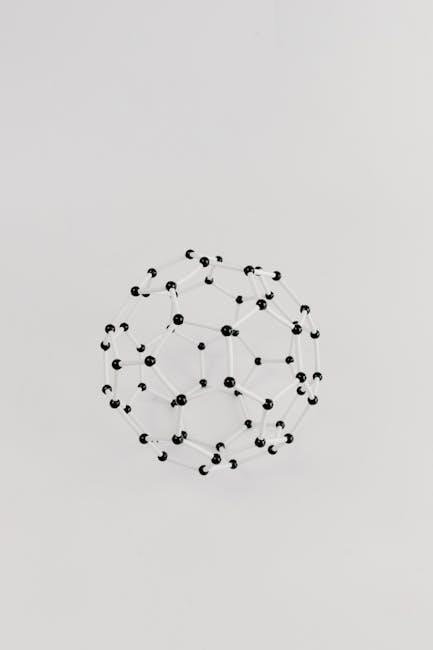
Cardiovascular Diseases and Disorders
Cardiovascular diseases include conditions like atherosclerosis and hypertension, impacting heart and blood vessel health. Early detection, lifestyle changes, and treatments are vital for improving patient outcomes and reducing mortality.
8.1 Congenital Heart Defects
Congenital heart defects are abnormalities in the heart’s structure present at birth, often affecting its walls, valves, or blood vessels. These defects disrupt normal blood flow and oxygen delivery. Common types include septal defects (holes in the heart) and malformed valves. Symptoms vary but may include bluish skin, breathing difficulties, or poor growth in infants. Early diagnosis through echocardiography is critical for timely intervention. Treatments range from monitoring to surgical or catheter-based procedures, depending on severity. Prompt medical care improves quality of life and long-term outcomes for affected individuals, addressing both physical and developmental challenges effectively.
8.2 Atherosclerosis and Its Effects
Atherosclerosis is a condition characterized by the buildup of plaque in arterial walls, leading to narrowed or blocked blood vessels. This process begins with endothelial dysfunction, allowing cholesterol and inflammatory cells to accumulate. Over time, plaques harden and calcify, reducing blood flow. Atherosclerosis is a primary cause of cardiovascular diseases, including coronary artery disease, stroke, and peripheral artery disease. Risk factors include high cholesterol, hypertension, smoking, and diabetes. If untreated, it can lead to ischemia, organ damage, or life-threatening events. Early diagnosis and lifestyle modifications are crucial to mitigate its progression and improve outcomes.
8.3 Hypertension: Causes and Consequences
Hypertension, or high blood pressure, occurs when the force of blood against artery walls is consistently too high. It can be primary, with no identifiable cause, or secondary, resulting from conditions like kidney disease or hormonal imbalances. Risk factors include obesity, genetics, and lifestyle choices. Chronic hypertension damages blood vessels, leading to arterial stiffness and increased cardiac workload. This can result in complications such as heart failure, stroke, or kidney disease. Early diagnosis and management through lifestyle changes and medications are critical to preventing long-term consequences and improving cardiovascular health.
8.4 Heart Failure: Types and Management
Heart failure occurs when the heart cannot pump enough blood to meet the body’s needs. It can be systolic, where the heart doesn’t contract properly, or diastolic, where it doesn’t relax. Causes include hypertension, coronary artery disease, and heart valve issues. Symptoms like fatigue, swelling, and shortness of breath often arise. Management involves lifestyle changes, such as a low-sodium diet and exercise, alongside medications like ACE inhibitors and diuretics. In severe cases, devices or surgeries, including heart transplants, may be necessary to restore cardiac function and improve patient outcomes.
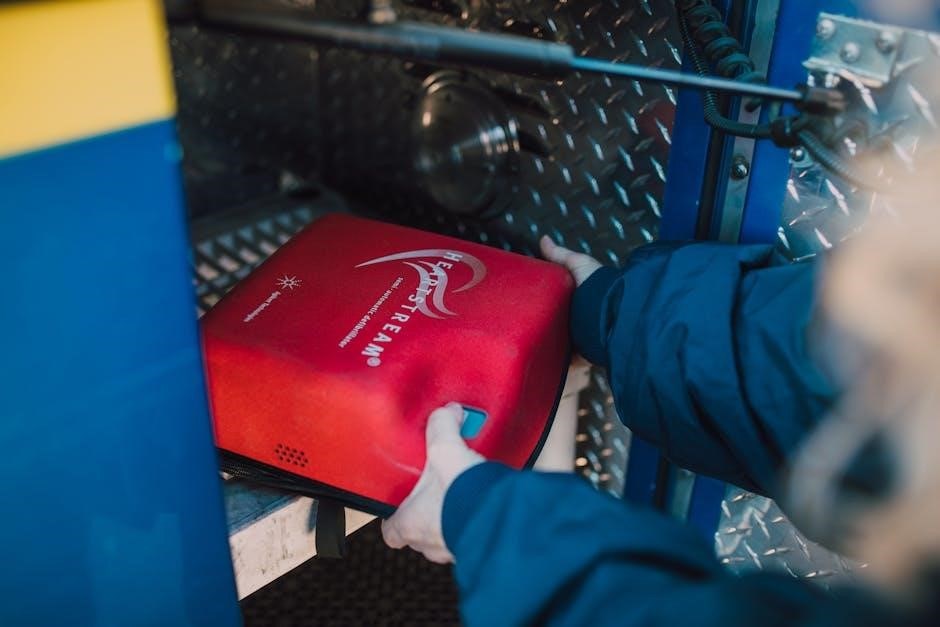
Diagnostic Techniques for Cardiovascular System
Diagnostic methods include echocardiography, MRI, ECG, blood tests, and angiography. These tools help assess heart function, detect abnormalities, and guide treatment for cardiovascular conditions effectively.
9.1 Imaging Techniques: Echocardiography and MRI
Echocardiography uses ultrasound waves to create real-time images of the heart, assessing its structure and function. It helps diagnose valve disorders, chamber enlargement, and cardiac defects. MRI provides detailed cross-sectional images of the heart and blood vessels, useful for identifying conditions like cardiomyopathy or congenital heart defects. Both techniques are non-invasive and enhance diagnostic accuracy, aiding in personalized treatment plans for cardiovascular diseases. These imaging modalities are essential for evaluating cardiac anatomy and function, ensuring precise diagnostics and effective patient care.
9.2 Electrocardiography (ECG): Monitoring Heart Activity
Electrocardiography (ECG) is a non-invasive tool that records the heart’s electrical activity. It detects arrhythmias, ischemia, and other cardiac conditions by analyzing waveforms. Standard ECGs provide immediate results, while ambulatory ECGs, like Holter monitors, track activity over 24–48 hours. This helps diagnose intermittent symptoms and monitor long-term heart health. ECG is essential for assessing cardiac function, guiding treatment decisions, and ensuring timely interventions. It remains a cornerstone in cardiovascular diagnostics, offering valuable insights into heart rhythm and electrical conduction.
9.3 Blood Tests: Markers for Cardiovascular Health
Blood tests are essential for assessing cardiovascular health. Key markers include lipid profiles (cholesterol and triglycerides), C-reactive protein (CRP) for inflammation, and troponin levels for heart damage. These tests help identify risk factors like high cholesterol, diabetes, and cardiac injury. Regular monitoring enables early detection of potential issues, guiding preventive measures and treatment. Blood tests are crucial for diagnosing conditions such as atherosclerosis, hypertension, and heart failure. They provide valuable insights into overall cardiovascular function, aiding in personalized patient care and management strategies.
9.4 Angiography: Visualizing Blood Vessels
Angiography is a medical imaging technique used to visualize the interior of blood vessels. It involves injecting a contrast agent into the bloodstream, which is then imaged using X-rays, MRI, or CT scans. This procedure helps diagnose blockages, aneurysms, or abnormalities in blood vessels. Coronary angiography is commonly used to assess heart arteries for plaque buildup, while cerebral angiography examines brain vessels for strokes or malformations. Angiography is critical for planning treatments like stenting or surgery, providing detailed insights into vascular health and aiding in precise intervention strategies.

Treatment and Management of Cardiovascular Conditions
Treatment involves lifestyle changes, medications, and surgeries. Lifestyle modifications include diet, exercise, and stress reduction. Medications like statins and beta-blockers manage symptoms. Surgical interventions such as bypass grafts or transplants address severe cases.
10.1 Lifestyle Modifications: Diet and Exercise
Lifestyle changes are crucial for managing cardiovascular health. A healthy diet rich in fruits, vegetables, lean proteins, and whole grains helps reduce cholesterol and blood pressure. Limiting sodium, saturated fats, and processed foods is essential. Regular exercise, such as aerobic activities (e.g., walking, cycling) and strength training, improves heart function and overall fitness. Maintaining a healthy weight and avoiding smoking and excessive alcohol consumption further enhance cardiovascular well-being. These modifications not only prevent disease but also improve quality of life and long-term health outcomes.
10.2 Medications: Anticoagulants, Statins, and Beta-Blockers
Anticoagulants prevent blood clots, reducing stroke and heart attack risks. Statins lower cholesterol, slowing plaque buildup in arteries. Beta-blockers manage heart rate and blood pressure, easing cardiac strain. These medications are often prescribed together to optimize cardiovascular health, especially for patients with hypertension, high cholesterol, or history of cardiac events. Regular monitoring ensures efficacy and minimizes side effects, making them cornerstone treatments for long-term cardiovascular management and disease prevention.
10.3 Surgical Interventions: Bypass and Transplant
Bypass surgery, such as coronary artery bypass grafting (CABG), reroutes blood flow around blocked arteries, restoring oxygen supply to the heart. Heart transplantation replaces a diseased heart with a healthy donor organ, offering a life-saving solution for end-stage heart failure. These procedures are typically reserved for severe cases where medications or less invasive treatments are insufficient. Both interventions require careful patient selection, precise surgical technique, and lifelong post-operative care to manage risks like rejection or graft failure, ensuring optimal outcomes and improved quality of life for patients with advanced cardiovascular disease.
10.4 Emerging Therapies: Stem Cells and Gene Therapy
Stem cell therapy and gene therapy are innovative approaches to treating cardiovascular diseases. Stem cells can differentiate into cardiac cells, offering potential for repairing damaged heart tissue. Gene therapy involves modifying or replacing genes to address inherited or acquired cardiovascular disorders. These therapies aim to restore normal cardiac function and improve outcomes for conditions like heart failure and coronary artery disease. While still largely experimental, they hold promise for personalized and regenerative treatments, advancing cardiovascular medicine beyond traditional surgical and pharmacological interventions.
